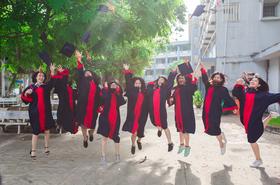- Lake Land College creates and continuously improves an affordable, accessible, and effective learning environment for the lifelong educational needs of the diverse communities we serve.
School Highlights
Lake Land College serves 8,125 students (32% of students are full-time).
The college's student-teacher ratio of 24:1 is higher than the state community college average of 21:1.
Minority enrollment is 24% of the student body (majority Black), which is less than the state average of 53%.
Quick Facts (2025-26)
- Enrollment: 8,125 students
- In-state tuition: $7,282
- Out-state tuition: $13,084
- Student-teacher ratio: 24:1
- Minority enrollment: 24%
- Source: Integrated Postsecondary Education Data System (IPEDS)
Top Rankings
Lake Land College ranks among the top 20% of public schools in Illinois for:
Category
Attribute
Debt For Students
School Overview
The teacher population of 343 teachers has stayed relatively flat over five years.
Lake Land College
(IL) Community College Avg.
Carnegie Classification
Associate's Colleges: High Career & Technical-High Nontraditional
Associate's Colleges: Mixed Transfer/Career & Technical-High Nontraditional
Institution Level
At least 2 but less than 4 years
At least 2 but less than 4 years
Institution Control
Public
Public
Year Founded
1966
Colors
Black, Red
Total Faculty
343 staff
239 staff
School Calendar
Student Body
The student population of Lake Land College has grown by 81% over five years.
The student-teacher ratio of 24:1 has increased from 11:1 over five years.
The Lake Land College diversity score of 0.41 is less than the state average of 0.69. The school's diversity has grown by 71% over five years.
Total Enrollment
8,125 students
3,838 students
Student-Teacher Ratio
24:1
21:1
# Full-Time Students
2,573 students
1,091 students
# Part-Time Students
5,552 students
2,747 students
# Enrollment Undergraduate
812 students
328 students
# Full-Time Undergraduate Students
2,573 students
1,091 students
# Full-Time Graduate Students
n/a
43 students
# Part-Time Undergraduate Students
5,552 students
3,310 students
# Part-Time Graduate Students
n/a
18 students
Total Dormitory Capacity
n/a
132 students
% American Indian/Alaskan
n/a
n/a
% Asian
1%
6%
% Hispanic
6%
26%
% Black
11%
13%
% White
76%
47%
% Hawaiian
n/a
n/a
% Two or more races
3%
3%
% Non Resident races
1%
1%
% Unknown races
2%
4%
Diversity Score
0.41
0.69
College Completion Rate (Students who graduate in less than 4 years)
47%
40%
College Completion Rate (Students who graduate in 4 years or more than 4 years)
n/a
55%
Average Graduate Earnings (10 Years)
$31,800
$31,800
Tuition and Acceptance Rate
The public in-state tuition of $7,282 is less than the state average of $7,875. The in-state tuition has declined by 10% over four years.
The public out-state tuition of $13,084 is more than the state average of $10,847. The out-state tuition has declined by 12% over four years.
In-State Tuition Fees
$7,282
$7,875
Out-State Tuition Fees
$13,084
$10,847
% Students Receiving Some Financial Aid
68%
81%
Median Debt for Graduates
$6,078
$8,029
Median Debt for Dropouts
$3,400
$4,618
Acceptance Rate
n/a
89%
SAT Reading
n/a
390
SAT Math
n/a
360
SAT Writing
n/a
355
ACT Composite
n/a
17
ACT English
n/a
17
ACT Math
n/a
17
Source: 2024 (or latest year available) Integrated Postsecondary Education Data System (IPEDS)
School Notes
- School Mascot: Laker Louie
- Lake Land College is a public community college offering career programs that lead to immediate employment, transfer programs that lead to a baccalaureate degree, liberal arts, adult education, special job training and retraining programs. The 308 - acre campus hosts nine major buildings plus six supportive buildings, two campus ponds, a 160 acre agriculture land laboratory, computer labs, CAD lab, child care lab, cosmetology clinic and a dental clinic. The library provides access to books, magazines and several electronic databases. Classes are offered at the Effingham Kluthe Center, Workforce Development Center /IETC, on the Internet and at more than 25 off campus sites. Lake Land College is also committed to using technology in the learning process, allowing the College to reach beyond east central Illinois and afford you opportunities that surpass what anyone would have imagined just a few years ago. Degrees and certificates in Biotechnology, Massage Therapy, Cisco and GIS, are just a few examples of the new programs available to our students. One of the most comprehensive offerings of online and interactive distance learning courses among any higher education institution is available at Lake Land. The Higher Learning Commission; Member - North Central Association of Colleges and Schools, Illinois State Board of Vocational Education, National League for Nursing, Council on Dental Education, American Dental Association and Commission for Accreditation in Physical Therapy Education. Approved as a Class I Community College by Illinois Community College Board and Illinois State Board of Higher Education.
Frequently Asked Questions
How much does Lake Land College cost?
Lake Land College's tuition is approximately $7,282 for In-State students and $13,084 for Out-State students.
What is Lake Land College's ranking?
Lake Land College ranks among the top 20% of community college in Illinois for: Least debt for graduating students.
Recent Articles

The Rise of Technical and Vocational Training in 2025
Explore the 2025 surge in technical and vocational training—enrollment, policy, costs, and why this path is gaining ground for students and parents.

Stackable Credentials: How Community Colleges Advance Careers
Discover how community colleges use stackable credentials to build career pathways, boost earnings, and enable lifelong learning in 2025.

High-Paying Jobs You Can Get with a Community College Degree
Discover top high-paying careers you can launch in 2025 with a community college (associate) degree and high-growth credentials in tech, healthcare and trades.










